The influencing space in social media has grown tremendously in the last few years, having been estimated to grow from $1.7 billion in 2016 to $9.7 billion in 2020. While most people are familiar with influencers being human just like them, there has recently been a rise of influencers created entirely of manufactured CGI. This blog post seeks to explore the content created by CGI influencers and discuss the significance of them. I will be using a Marixst approach through the view of materialism to make remarks about the content of CGI influencers in the context of modern-day commerce.
One of the first CGI influencers, Lil Miquela (@lilmiquela), was created by Brud, a startup specializing in the intersection of artificial intelligence and media. Lil Miquela was introduced in 2016 and quickly grew popular, gaining upwards of 3 million followers by 2021. While much of Lil Miquela's popularity hinged on the debate of whether or not she was a real human being, the appearance of CGI influencers vary from being clearly depicted as a cartoon to having an almost human-like image.


The influence CGI influencers have on people is significant and often much more than what human influencers can often reach. A study from 2019 found that CGI influencers have almost three times more engagement in their content as compared to human influencers. Additionally, human influencers need to make four times the amount of content in order to see the same rise of followers as CGI influencers. (Baklanov)
To analyze the sample of CGI influencer content, I first identified common, overarching themes found in their posts. The common themes I identified were: blurring the line between reality and fiction, collaborating with human beings, inspiring their following through encouraging messages, expressing feelings of intense sadness.
CGI influencers capitalize on the question of reality vs. fiction by being portrayed as human-like. Facial features are digitally sculpted to look realistic person. Followers engaging with these influencers often ask questions like “Are u rlly a robot” and “ARE YOU REALLLL? GIRL YOURE PRETTY”. CGI influencers will also post pictures of themselves doing uniquely human activities, such as eating and wearing a mask in a pandemic. These kinds of posts bring focus to the question of what is real versus what is not.
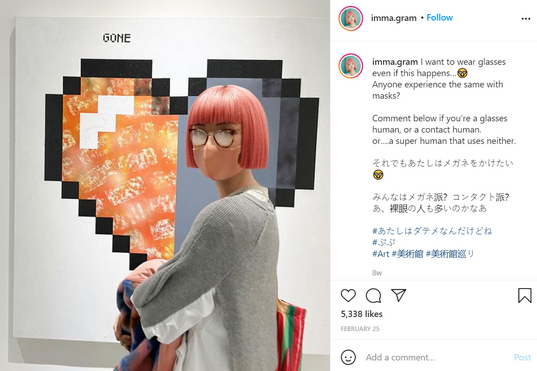
However, some CGI influencers also acknowledge the fact that they are not human. For example, in the post pictured below, Liam Nikuro (@liam_nikuro) states the fact that he is a “virtual human” and talks about the meaning of the word “glitch” both in both a technical and physical sense.
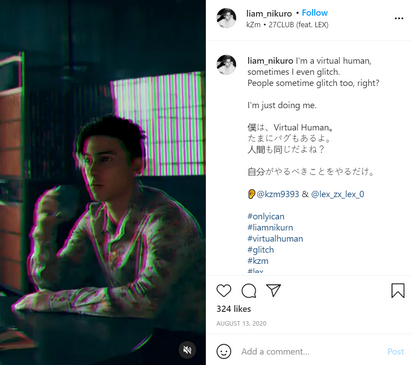
The ambiguous interpretation of reality presented by CGI influencers can be seen in the modern day e-commerce shopping experience. When customers shop online, they see pictures of available products. At that moment in time, the product itself does not really exist, merely the idea of the product itself through images and descriptions. The customer purchases these products without truly knowing what the product will look like in-person, as they cannot interact with the physical product before purchase. When the product finally arrives in person, the customer may be relieved to see that it appears as what they imagined, or shocked to see how different the product looks in-person. The introduction of shopping for products online blurs the line of reality that brick-and-mortar stores were able to bring to customers, when they were able to feel and possibly try on products before committing to a purchase. Like how early adopters of online shopping were captivated by the novelty of the experience, followers of these CGI influencers are similarly intrigued by the unique qualities of a CGI person. Thus, CGI influencers may want to focus on this question of their humanity to fascinate and attract a larger following of people.
While CGI influencers are creations from the digital world, they often interact with human influencers that exist in the real, physical world. These posts often showing human influencers posing closely with the CGI influencers. The human influencers are posed in a way that suggests they are actively interacting with the CGI influencers, as opposed to being placed in an edited post with a nonexistent person.

These kinds of posts ground these virtual influencers into the physically real and human world their followers belong in.
This intersection between fabricated constructions and physical reality can be seen through the idea of customer reviews on e-commerce sites. While virtual product listings are somewhat of a disconnect between reality and fiction, as mentioned previously, incorporating reviews ties these products down into a reality, ensuring customers of what they will be purchasing. Reviews of products allows customers to be able to read about other's experiences purchasing and using the product. Although the product listing itself is entirely virtual, the reviewers are also human and real like them. Customers are able to connect with these reviewers, and later transfer this feeling to trust the product itself enough to purchase it. Perhaps the influx of collaborations between CGI influencers and human influencers can be explained as a way for these fabricated personalities to gain the trust and love of their human audience. CGI influencers have an incentive to collaborate more with human beings in order to establish a stronger relationship between themselves and their followers.
Amid posts on their day-to-day life and interactions with others, CGI influencers also post inspirational words to their audience. They often express words of encouragement and love to their following, much like how a parent would do their children or friends to each other.

Posts are often accompanied by the CGI influencer posing in an endearing fashion. These posts stand in contrast to the rest of the posts often made by CGI, usually content created to further establish their personal brand or fabricated day-to-day life.
The seemingly genuine and sincere content by CGI influencers can be seen as grounded in personalized advertising that fuels modern day commerce. This marketing tactic is employed because it allows brands to target users who are more likely to engage with their products. The usage of inspirational content by CGI influencers may serve a similar purpose. By posting these heartfelt words, their followers feel somewhat special and heard from this CGI influencer, and may be more likely to engage more with their content in the future.
Similar to the more emotional side of writing encouraging posts, CGI influencers will also talk about relatively sad feelings or events in their lives. The term “sadfishing”, a phenomenon where people “share … personal problems to get sympathy on social media” is something often used to describe similar behavior from human influencers (Abraham).

In these kinds of posts, the CGI influencer is often depicted with tears in their eyes or with a reddened face, a common human side effect from crying. Interestingly, almost all posts of these kinds usually involve relationships, whether it be romantic or familial.
The sadfishing employed by CGI influencers can be understood to relate to the increased usage and reliance of color branding by brands and businesses, especially on their websites. For example, Amazon, a large e-commerce site, uses a dominant color of black, with a hint of yellow. While using black allows the logo and name of the brand to be emphasized, the yellow introduces a feeling of warmth and welcome to the consumer (Cole). Ebay, another popular e-commerce site, is most commonly known for using the combination of red, blue, yellow, and green. This variety of colors was used to show the diversity of Ebay's marketplace and what it could provide to consumers (Cole).


The intentional usage of colors in brands helps large brands and businesses evoke some sort of subconscious feeling and response from their consumers. The average person will probably find it hard to relate to these large brands; however, with the use of color psychology, brands are able to produce a desired reaction or feeling from their consumers. Similarly, the way CGI influencers utilize sad personal stories help their followers feel more emotionally connected to a digital entity that cannot possibly be able to reciprocate that emotion.
Understanding the foundation of CGI influencers and their content is crucial because social media influencers are making up much of current day marketing. As influencers are becoming more commonly used as a way to market to customers, the FTC has established a rule that requires influencers to clearly disclose relationships with brands when they post sponsored content. While human influencers are subject to this rule, this has not been enforced on the content of CGI influencers because it is harder to establish who the responsibility belongs to (CGI influencers are often powered by large groups of people). While there are technically no legal rules being broken when CGI influencers post subtle promotional content on their social media, it is deceiving to their audience.
It is also interesting to note that while the content of these CGI influencers is grounded in commerce, this same content also helps produce commerce, lending into a self-perpetuating cycle. This seems to imply the very purpose of CGI influencers is for commerce itself. Since CGI influencers are becoming more popular in the recent few years, it's important for their followers to understand how the basis of these influencers serve to promote an exchange of goods. While on the surface, these influencers are dressed with an elaborate backstory with deep emotions, they are fundamentally cogs used to drive an economic system of goods and services.
Social media has become an increasingly popular source of information. According to a study, 48% of Americans use social media as a news source. Instagram, a social media platform created for users to share photos, has recently become a popular source of activism information. Accounts are made solely to create content for activism and posts spreading social awareness is being shared constantly.
The scope of this blog post is narrowed to activism against anti-Asian racism due to the recent surge of attention towards this issue. An increased wave of anti-Asian racism was introduced when the coronavirus, which has origins in China, drastically changed the lives of people around the world.
Similar to activism posts on social media, online marketing campaigns also post with the purpose of reaching new audiences and inciting them into action. I plan to explore the similarities between Instagram activism and online marketing to better understand the role Instagram activism plays in our current society.
Commonly found across many activism posts are a clean font and nice background. Information is displayed as is, with a lack of extraneous detail often found in traditional news articles, another medium of spreading social awareness. One reason for this unique display of information is the goal of reaching a new audience. @soyouwanttotalkabout, a popular Instagram page that “[dissects] progressive politics and social issues in graphic slideshow form,” states that she tries to market her content to “appeal to apolitical people, the ones who'd rather stay out of it and enjoy, like, mimosa pictures”.
Asking questions tends to incites curiosity. Below are two examples of posed questions, the image on the left was created by Tend, a dentistry company. On the right is a post by The Conversationalist, a Gen Z community.


The question Tend asks revolves around the efficiency of electric toothbrushes and may attract the attention of viewers who care about their oral health, who are the target audience for Tend. The question posed by The Conversationalist is very topical (based on recent news). Viewers have probably heard of the rise in anti-Asian hate crimes, and might be curious to learn more. These people would be the target audience of this post, which was posted to spread awareness of this topical issue. Both parties use the idea of a question to engage with the people they want attract and retain.
Facts, concepts proven to be true, are used to provide objectivity. Both parties I am analyzing use the presence of implicit facts to show their credibility as relevant to the topic they are talking about.
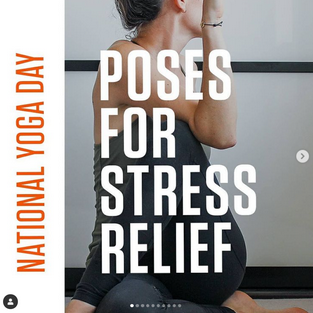
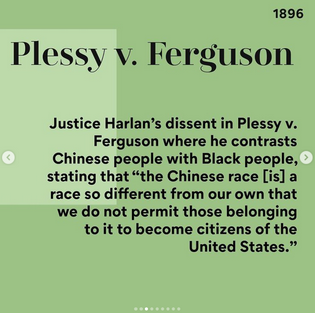
Although Bulletproof as a company focuses on selling nutrients, demonstrating their knowledge in yoga on the left post, a popular form of practicing wellness, creates trust in their audience by showing they understand what the holistic idea of wellness is. This trust may translate into more Bulletproof nutrient products being sold. On the right, Kleinrock demonstrates her recognition of anti-Asian racism through her knowledge of this law history. By doing this, she portrays herself as a source of objective truth to support the case that anti-Asian racism is real and here in America (as deniers often cite statistics such as high Asian American employment rates and pay wages). Users who see her post may be more likely to start following her content to learn more reliable facts about anti-Asian racism. Both parties use the presence of facts to help establish their own credibility in the space they operate in. This helps with establishing trust among their current audience and possibly engaging with a new following.
The context we see imperative statements most often is when someone of a higher authority instructs their subordinate to do something (e.g. a boss commanding their employee to file some documents). However, the creator of imperative statements also has a role in both social media activism and marketing.


The statement on the left by Casper is relevant in context, as Casper sells people the mattress they sleep on in bed. While the use of an imperative statement here is not literal, as in, they do not expect you to immediately go into bed after reading their post, it is used to keep the idea fresh in your mind. If they think long enough, perhaps they feel the need to improve their mattress, and might go to Casper to get one. While the statement by @dont_be_racist_thank_you on the right is meant to be taken a little more literally than the Casper statement, it is not unreasonable to think that the creator of the post knows this probably won't happen the second someone reads their post. The idea of Asians as a model minority (a minority group that is perceived to reach higher than average achievements) is a large obstacle for people to believe anti-Asian racism exists. This post, much like the Casper post, is mainly meant to bring the idea on the top of people's minds to mull on. Imperative statements in these contexts don't work as direct commands, they operate more subtly to guide the audience to ruminate on certain ideas, in a way that these post creators hope will align with the values behind their posts.
Numbers as symbols often convey the idea of objective facts. Mathematics, a subject based on numbers, is popularly known to only have right or wrong answers, rather than an intermediate subjectivity like philosophy might have. The usage of numbers on these Instagram posts helps post creators add credibility to their ideas.
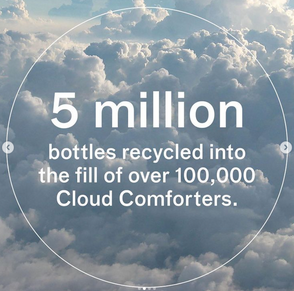
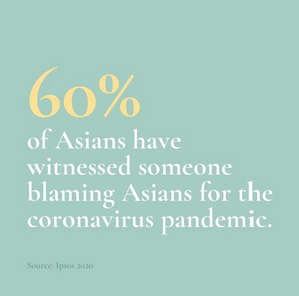
A major part of Buffy's, a bedding company, marketing strategy is their focus on being environmentally friendly. This could encourage current customers to continue shopping through Buffy, and could entice new customers to join in on making a positive impact. Instead of filling the posts with accounts of people witnessing blame, the post on the right by Very Asian Media highlights “60%” to show viewers how much people are being impacted by this issue. Both activists and marketers enlist the use of numbers to legitimize the product or issue they stand behind, as well as make it easy for people to visualize and understand the main idea in a short amount of time.
It is important to understand the text behind Instagram activism posts because it creates an avenue for critically analyzing the sources of content. These kinds of posts can easily be found all over the Instagram platform, whether it be through friends sharing or even on Instagram's recommended “Explore” page. Although the issues that posts like these cover are important to discuss, it does not alleviate the post creators from criticism. Instagram activism has received backlash from some people, who call this performative activism, meaning post creators are only participating in activism to increase their social status among peers rather than because of their devotion to the cause.
While this is probably not true for all Instagram activists, the similarities between tactics used by both social media marketing and popular activism posts are many. One interpretation might be that Instagram users have caught on to what spreads information effectively, and are using these techniques to spread important ideas on social awareness. Another interpretation might be that the increased spread of a post will bring more users to their profile, possibly more followers. However, it is necessary to point out the possibility that social media marketers are also taking cues from what is popular among users of the platform they want to advertise on. The ways that both activists and marketers craft Instagram posts are remarkably similar, but causation cannot be proved without further research.
What are the words that define you — who you really aspire to be? Find those words, then live them and share them.
— Dr. Rebecca Parsons
I feel very fortunate to have been given the opportunity to attend my first Grace Hopper Celebration this year as a Facebook scholarship recipient. When I first started becoming more involved in technology, I always heard the term “GHC” being thrown around, but never really understand what it was. I never would have imagined how much inspiration and community I experienced at Grace Hopper.
I arrived in downtown Houston before the actual conference began for 2 whole days of events with FB employees, as well as the other 49 scholarship recipients. For the next couple of days, we prepared to make the most out of GHC by learning from people's past experiences and getting a better idea of what to expect at the conference. As this would be my first year attending, I was both excited and a little scared of what was to come.
During our off-time, I got a chance to better understand the vast experiences and work of the engineers at FB, being able to talk with them in a more casual setting. It was pretty eye-opening to see the how different (and also how similar) people's paths were to getting to where they are today; it helped me put into perspective how bountiful and present these varied experiences are; they only come up when we get to foster and nurture diverse communities.
Being in this scholarship program with 49 other women in tech has also allowed me to really bond with them, especially since we were mostly in the same boat: female students hoping to make an impact through technology. I'm especially grateful for all the upperclassmen I have met and the encouragement + wisdom they've passed onto me!
It was finally the big day: GHC had officially begun. Our first day kicked off with the Opening Keynote, where heard from several amazing women leading change in STEM in the work they do. It was awe-inspiring to see how much effort has been put into leading this movement, and how big the community advocating for women in STEM really is. As I sat in my seat high up in the balcony, I looked around and saw hundreds, probably even thousands of people sitting in the stands, just like me, taking in everything that was being said. At that moment, I felt understood and validated.
After the keynote was finished, we headed towards the main convention center where GHC was being held. Walking into the Career Expo was pretty overwhelming, greeted by a never-ending room filled with booths displaying all their innovative technologies. Next to the Career Expo was also an area showcasing new technologies being developed by various companies. It honestly seemed like a huge museum, but instead of historical artifacts being displayed, it is filled with technology of the future. One of the main reasons why I continue pursing technology is the possibility to help pioneer what the future of our society looks like. Seeing the interesting ways technology is being implemented in current companies keeps me excited for what the future holds, not only for me, but for everyone.
After walking around the huge George R. Brown Convention Center all day, the evening events different companies hosted were a great way to unwind a bit and get a chance to talk to industry engineers in a more relaxed setting. These events were also great opportunities to meet other students attending GHC and share the similar experiences (and nerves!) we got from attending our first couple GHC's.
I went into this experience mainly focused on the recruiting aspect, and ended up spending most of my time between the Career Expo and Interview Booths. If I have the opportunity to attend again next year (hopefully!), I plan on spending more time attending the talks/sessions that are also happening throughout the day. There were a couple of talks that caught my eye during registration and I look forward to reliving the Grace Hopper Celebration by watching these recorded talks online when they come out.
This Saturday, a sweltering heat wave took over NYC as I sat in an air-conditioned room in the Microsoft Store on 5th Ave.
I was sitting in on a intro to machine learning workshop by Girls Make Apps. After some simple introductions and ice breakers, we got down to the technical business.
At this workshop, we covered…
Before I came to this workshop, the term “machine learning” had been very intimidating to me; I just imagined hundreds of computer scientists and statisticians staring at millions of lines of code and data all day. I learned that there were actually many tools and resources out that made ML a more reachable idea to understand and utilize.
It was inspiring seeing so many young girls organizing these tech events and talking about how their work in tech. I'm excited to see the presence of more women pursing computer science!
After the workshop was over, we were invited to take a tour of the Microsoft flagship store and experience their products. Here are some highlights:
We got to talk to Pepper, a humanoid robot that responds to both voice and digital input. He even did a little dance for us! I have been reading about how humanoid robots like Pepper have begun to help run fully-functioning stores, so it was a great opportunity when we were able to see in-person how exactly Pepper functions.
We were also given a chance to try out Microsoft's HoloLens, a self-contained holographic computer you can wear to interact with holograms. When I wore it, I felt like I was wearing a pair of very, very over-sized sunglasses.
The holograms were set in the 3-D space we were in, we were able to literally walk around and through these holograms. To interact with the HoloLens, there were several hand gestures it recognizes (such as clicking and returning to the home menu). “Clicking” around the room allowed us to see how the lens “maps” the 3-D space around us; the closer we were to objects, the clearer the mapping outline was.
I came into this as a very clueless person and walked out with some resources on my belt and an unforgettable experience with today's latest technology. To think I was planning on staying home because of the heat… I'm glad I didn't.